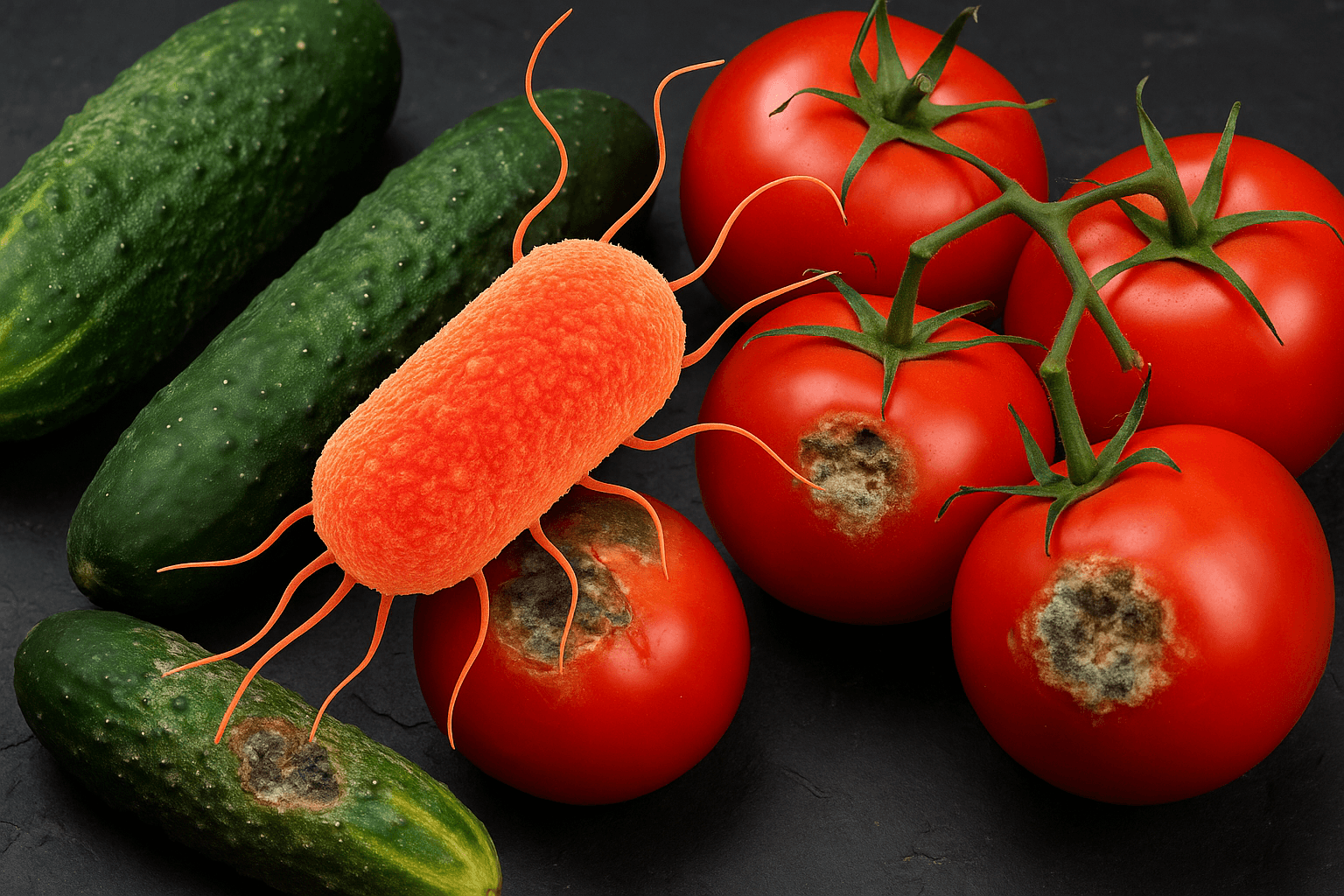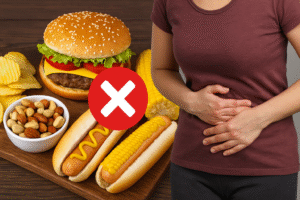Did you hear about the new salmonella epidemic? If you’re a fan of salads, sandwiches, or just fresh vegetables in general you won’t be disappointed so keep on reading. The nation’s salmonella outbreak has now been traced to two pantry staples: tomatoes and cucumbers. Yes, those crunchy new additions to your lunch may not be as safe as you think.
Let’s look at what’s happening, why it matters and, most important, what you can do to protect yourself and your family.
What Is Salmonella Anyway?
You likely have heard of salmonella before. But what exactly is it?
Imagine salmonella as a wily little bug that doesn’t require much to make mischief. It resides in the intestines of animals and humans, and it can invade your body through contaminated food or water. When it does, it can trigger an illness known as salmonellosis — and it’s not pretty.
Some of the Most Frequent Signs Of Salmonella May Include:
- Diarrhea
- Fever
- Abdominal cramps
- Nausea and vomiting
- Headaches or muscle aches
These symptoms typically appear six hours to six days after ingesting tainted food. The vast majority of people get better on their own in about 4 to 7 days. But it can be serious for some — particularly young children, the elderly, pregnant women and people with weakened immune systems.
What Is It With Tomatoes and Cucumbers?
And in recent months, more than 160 have fallen ill in dozens of states, at least 45 of whom are known to have been hospitalized. Why? Due to salmonella in some batches of tomatoes and cucumbers.
The Food and Drug Administration (FDA) and Centers for Disease Control and Prevention (CDC) are currently investigating, but so far they’re tied the outbreak to both veggies being served at the same restaurants or sold at the same store.
It remains unknown whether the contamination occurred in the growing, harvesting, packaging or distribution process — but experts believe that there was cross-contamination somewhere along the line.
The Hard Part? You Can’t See or Smell It
That’s right. Salmonella doesn’t have a distinct smell or color, either. So do not be lulled into thinking that because your tomatoes and cucumbers look and taste fresh, they are safe.
Which is why it’s also incredibly important to practice good food safety, no matter how fresh your produce may seem.
How to Stay Safe While Eating Fresh Produce
I mean, let’s be real — we’re not giving up fresh veggies. Nor should we! They are nutrient-dense and a necessary part of a healthy diet. So how do you protect yourself?
Here are some pointers to help you along:
Wash Everything — Even “Pre-Washed” Produce
Yes, even the kind labeled as “triple washed.” Run cooked rice under cold running water and use your hands to swipe gently on the surface. You don’t need fancy veggie soaps (in truth, those are not recommended).
Separate Raw and Cooked Foods
Comb cutting boards, counters or utensils that come into contact with both raw and cooked foods without washing them between uses. The problem of cross-contamination is a devious one.
Refrigerate Leftovers Immediately
Bacterial cultures grow rapidly, especially at room temperature. If you’re finished eating, throw it in the fridge within two hours — or more quickly if it’s a hot day.
Be Extra Careful for High-Risk Groups
Are you serving the dish to a young child, an elderly person, or someone with a compromised immune system? Instead, ponder cooking veggies instead of serving them out of the ground. Some heat can be deadly to bad bugs like salmonella.
Stay in the Know
Look on websites like the CDC and the FDA to see updates on what produce could be implicated in outbreaks. Half the battle is staying informed.
What to Do If You Think You’re Sick
Bloated after eating a tomato-cucumber salad?
So if you begin to get stomach cramps or a fever or have diarrhea that doesn’t go away after a couple of days — don’t ignore them. Dehydration and complications can sneak up, especially in high-risk patients. In more extreme cases, a doctor may even prescribe antibiotics.
If you’re unsure, call your doctor or other health care provider.
And if you can, note where and when you purchased those veggies. It can also aid in finding the source of the contamination.
Why Are Outbreaks So Common Today?
Does it seem like every few months there’s a new outbreak associated with lettuce, onions, or now, tomatoes and cucumbers?
You’re not imagining things.
There are a few reasons why production outbreaks are becoming more frequent:
- Greater centralization of the food supply — A single contaminated farm or factory can spread tainted produce across the entire country.
- Broad-based tracking systems — Technology allows us to track outbreaks earlier and more broadly than ever before, across state lines.
- Further raw eating — As we follow the lead of the raw craze and salad-based meals, a downside is that we will be consuming uncooked (and potentially contaminated) veggies.
How This Outbreak Is Affecting Restaurants and Grocery Stores
If you’re among those wondering whether it’s safe to eat out or stock up on fresh veggies, you’re not alone.
During a recall, some large grocery chains and restaurants may remove a product from the shelf or menu as a precaution. That’s a positive thing — it means they take the safety of customers seriously.
So the next time your local grocery store runs out of tomatoes or cucumbers, don’t lose your cool. They might be doing it to keep you safe. Check with an employee to see if they’ve pulled products off shelves as part of a recall — or buy alternatives, such as bell peppers or cooked squash, for now.
In a Nutshell
For people in the empirically informed world, this latest salmonella outbreak should wake us up. It is a reminder that food safety is not just about meat and dairy — fruits and veggies are part of that, too.
Here’s the bottom line:
- Stay informed.
- Mind your Ps and Qs in the kitchen.
- Learn the signs of food poisoning.
- Trust your instincts, and talk to your doctor if you feel ill.
- When in doubt—throw it out.
With a few easy habits, you can continue to safely enjoy fresh, healthy foods while guarding against dangerous bacteria like salmonella.
Stay Healthy, Stay Aware
Foodborne diseases such as salmonella are not just a rare headline, but rather real dangers that we can fall victim to at any time. But by using a bit of know-how and an added measure of care in the kitchen, you can dramatically limit your risk.
So next time you chop up some tomatoes or cucumbers for lunch, just read and rinse and consider cleanliness. Your stomach thanks you for your service.
Have questions or tips for how to keep produce safe? Let us know in the comments below — we’d love to hear how you keep safe in your kitchen!








